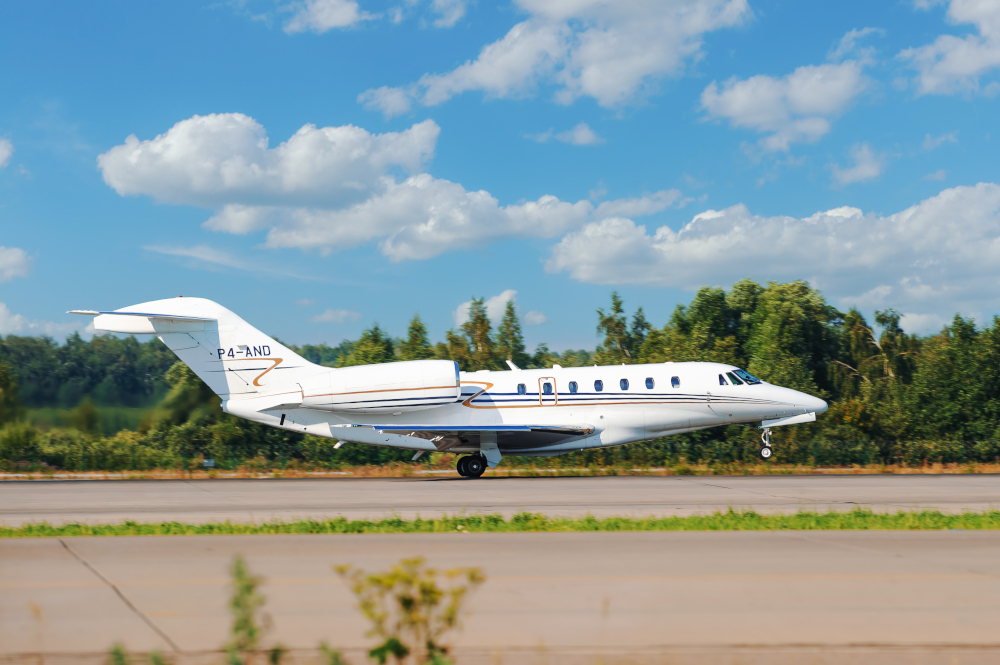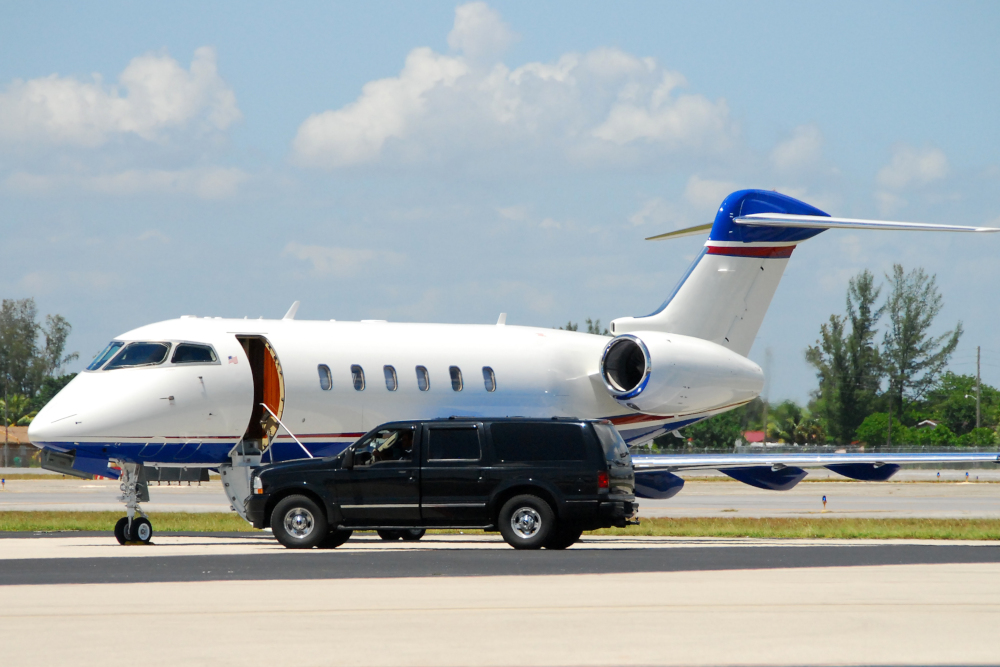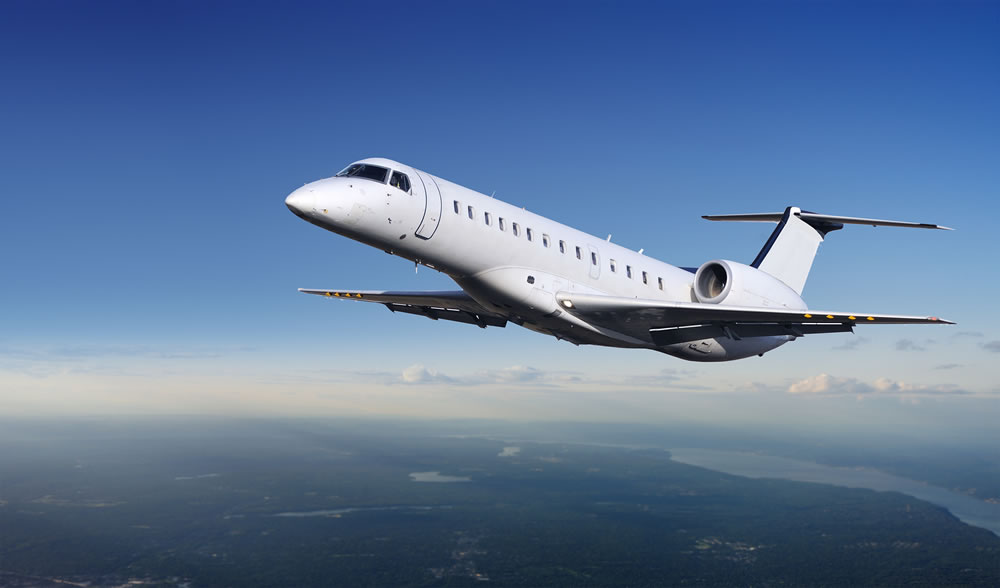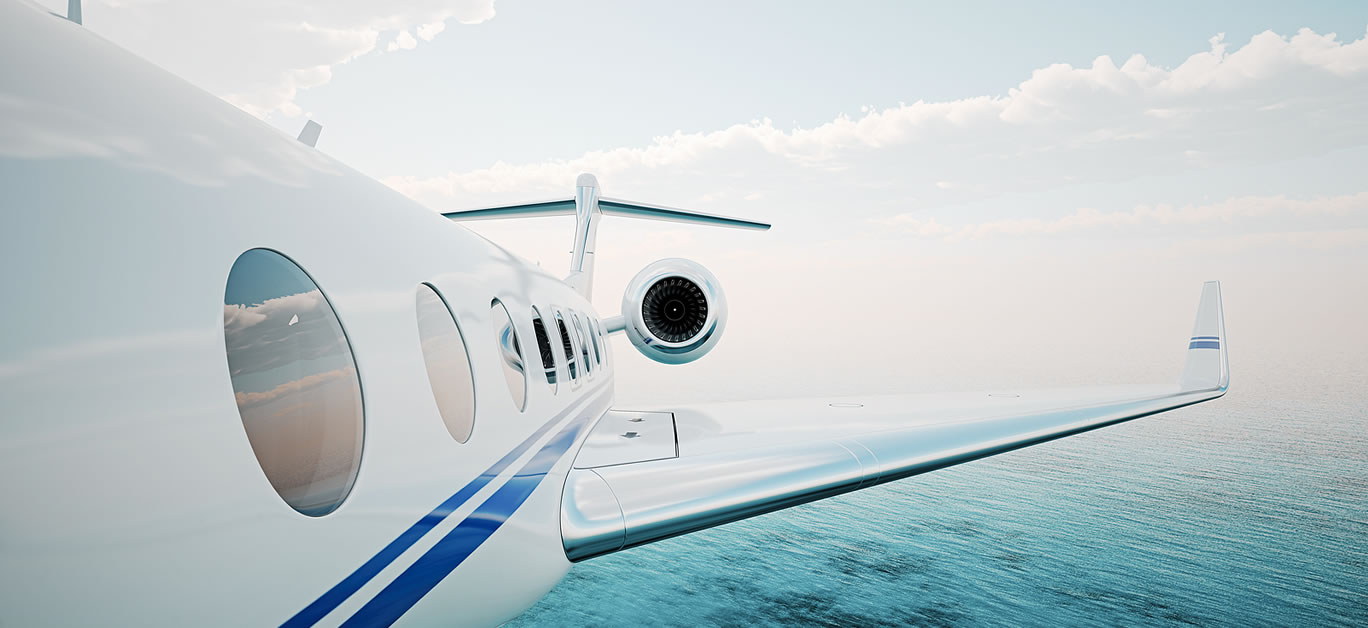When it comes to luxury air travel, it doesn’t get much better than chartering a private jet. Granted, first class with a commercial airline comes with plenty of perks and a general sense of opulence from start to finish – but two things it doesn’t give you are complete privacy and the ability to travel on your own time.
Of course, chartering a private jet doesn’t come cheap, but if you’re prepared to pay the price-tag for a first-class ticket then why not go all the way and guarantee yourself the most exclusive air travel experience of your life?
For every billable flying hour, a private jet can be rented for between $2,000 and $11,000, covering a wide range of aircraft, from the best executive jets to turboprops.
Turboprops, Very Light Jets, and Executive Light Jets come with the lowest price tags, with flight hours costing between $2,600 and $3,500, while super Midsize or Midsize Jets range in price from $3,200 to $6,000 per hour. In the US, the hourly cost of large and ultra-long-range jets ranges from $5,600 to $11,000, whilst in the UK, you can expect to pay the least – £1,300 an hour – for a Citation Mustang Cessna – and the most (£5,641 per hour) for a Global Express bombardier.

Executive variants of ultra-luxury VIP aircraft like the BBJ and ACJ cost extra – but how do you know which is best suited for you and your party? Here, we take a look at all you need to know about chartering and flying private in 2023.
The different types of private jets
Knowing the cost of a private jet charter is the first step towards making a booking for your next high-end flying experience, but there are several other factors to consider, too.
Identifying which jet is best suited to your needs is one of them – so here’s a quick breakdown of some of the most popular types, and some helpful information about each.
Very Light jets
Very Light Jets (VLJs), which represent the smallest private aircraft category, are less expensive to run and maintain than regular light aircraft, and are best for short-haul travel – in other words, flights of no more than three hours in duration. These aircraft, also known as Compact Light Jets, can depart on shorter runways and land in locations frequently inaccessible to commercial aviation.
Although these jets can usually transport four to seven passengers and a fair amount of luggage, there is no space for a cabin attendant, so bear this in mind if five-star service throughout your journey is a non-negotiable.

Light Jets
There are many well-liked private jet models available in this category, including the Pilatus PC-24 – a twin-engine jet made by the Swiss manufacturer Pilatus Aircraft that is ideal for mid-range travel. The twin-engine configuration maintains airfield capabilities while enabling a more extended range, and although less well-liked by business travellers, this aircraft is an excellent choice for people who require a private jet immediately and conveniently.
Midsize Cabin Jets
Midsize Cabin Jets are the smallest aircraft type offering stand-up headroom and are large enough to cover flights of over 2,000 miles. The fact that a flight attendant typically serves midsize cabins is another feature that sets them apart. Private aviation FAs serve food and drinks and execute safety duties in an emergency, just like airline flight attendants do, and toilets and galleys for onboard entertainment and food service are also available on this jet.
Even with these advantages, they can still operate from smaller airports and relatively short runways. The Learjet 60, Cessna Citation Latitude, and Gulfstream G150 are examples of medium-cabin jets you may wish to consider.
Heavy Business Jets
Heavy Business Jets can accommodate up to 19 passengers and have even more cabin and baggage room than super-midsize jets. They provide even higher cruising speeds and longer ranges than smaller categories, making them the perfect option for longer-distance travel.
These jets are typically equipped with a fully enclosed bathroom, a full kitchen with an oven, an onboard entertainment system, and Wi-Fi, making them exceptionally comfortable for long flights with larger groups or families, supporting journeys of up to nine hours in duration or covering up to 6,000 kilometres. Two flight attendants can effectively manage a conventional heavy plane’s entire in-flight catering service, but it’s worth bearing in mind that aircraft in this category need longer runways and bigger airports from which to operate.

Key things to consider
Although hiring a private jet for your own use or for business purposes comes with many advantages, doing so is a significant investment. But, if the cost doesn’t faze you, then you can expect to enjoy more comfortable and productive flights, with flexible itineraries designed to suit you or your guests.
There are, however, certain things to think about before making a reservation. First, consider your anticipated average flight times and ensure you’re choosing the right aircraft for the job – if you’re unsure, then simply ask your chosen provider to advise further. You’ll also need to ensure that your aircraft can land and take off from the departing and destination airports you have in mind – particularly if you want to use smaller airports or FBOs for private jets.
Before requesting a quotation, make a list of what you want to get out of the experience, including any non-negotiables and be sure to pass these on when making an enquiry. Smaller details like the type and strength of Wi-Fi you need, dining menus, whether pets will be travelling with you, and the like, should all be communicated in order to get a bespoke and accurate quote.
The ideal window for booking a private jet flight is within three to four weeks of the departure date – but the great thing about flying private is that it is often possible to charter a plane fairly last minute too, as long as you are flexible about the specifics of your aircraft and don’t need to travel too far.






















